Movie | Buried Treasure | Director | Actress | Actor | Supporting Actress| Supporting Actor |
Original Screenplay | Adapted Screenplay | Music in a Film | Sound Design | Editing |
Cinematography | Production Design | Ensemble Cast | Documentary
Best Movie |
|
  After Yang – Starting with one of the best opening credits ever, a big-brother-like universal family dance-off clues us in to the fact that we’re not in Kansas anymore. The film tells the story of a family grappling with the meaning of life, love, memories, connections, loss and after-life when their A.I. helper unexpectedly breaks down. Excellent performances along with outstanding cinematography, production and sound design meld perfectly to create a visually stunning and emotionally affecting film. The screenplay by director Kogonada was beautifully adapted from the short story written by Alexander Weinstein “Saying Goodbye to Yang”. How one perceives the meanings within this film is subjective. A second watch is recommended, to appreciate all of the intricacies (some of which may have been missed or forgotten from the first time around). — jb After Yang – Starting with one of the best opening credits ever, a big-brother-like universal family dance-off clues us in to the fact that we’re not in Kansas anymore. The film tells the story of a family grappling with the meaning of life, love, memories, connections, loss and after-life when their A.I. helper unexpectedly breaks down. Excellent performances along with outstanding cinematography, production and sound design meld perfectly to create a visually stunning and emotionally affecting film. The screenplay by director Kogonada was beautifully adapted from the short story written by Alexander Weinstein “Saying Goodbye to Yang”. How one perceives the meanings within this film is subjective. A second watch is recommended, to appreciate all of the intricacies (some of which may have been missed or forgotten from the first time around). — jb |
|
 Aftersun – A few nights after first viewing this film about an adult woman looking back on a vacation she took with her father as a child, I was still piecing it together—less in terms of logistics than taking in all the shifting perspectives, recurring images, ambiguous tones and sustained feeling of drifting in and out of consciousness. Charlotte Wells’ wholly original debut feature is less a key for a lock than an open door into another way of seeing that lingers long after its revelatory yet enigmatic final scene. — ck Aftersun – A few nights after first viewing this film about an adult woman looking back on a vacation she took with her father as a child, I was still piecing it together—less in terms of logistics than taking in all the shifting perspectives, recurring images, ambiguous tones and sustained feeling of drifting in and out of consciousness. Charlotte Wells’ wholly original debut feature is less a key for a lock than an open door into another way of seeing that lingers long after its revelatory yet enigmatic final scene. — ck |
|
 Drive My Car – A best movie is a perfect movie, or, at least, approaches perfection more than any other. It exhibits excellence in every facet of movie making. As does Drive My Car, a profound and monumental meditation on death, grief, love, friendship, trust, and theater, Its big ideas seduce. Its cameras find a tiny red automobile, a steel ladybug, lost in a landscape saturated in gray, blue, and white. Its characters speak, each in a different language, but they communicate anyway. Its actors register the subtlest currents of emotion. It builds upon quotidian details to amass a whole and coherent place. It never tells, but always shows. These are the hallmarks of a best movie. — gp Drive My Car – A best movie is a perfect movie, or, at least, approaches perfection more than any other. It exhibits excellence in every facet of movie making. As does Drive My Car, a profound and monumental meditation on death, grief, love, friendship, trust, and theater, Its big ideas seduce. Its cameras find a tiny red automobile, a steel ladybug, lost in a landscape saturated in gray, blue, and white. Its characters speak, each in a different language, but they communicate anyway. Its actors register the subtlest currents of emotion. It builds upon quotidian details to amass a whole and coherent place. It never tells, but always shows. These are the hallmarks of a best movie. — gp |
|
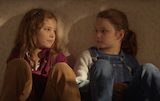 Petite Maman – At just over an hour, this little gem of a film contains a shocking amount of depth. A young girl who has troubles at home feels lonely and explores the nearby forest. There she finds a playmate her age and together they build a secret fort and enjoy each other’s company. The pleasures of nature and companionship are rendered in a way that conjures the simple structure of childhood days: breakfast, playtime, a treasured game, running and squealing with delight in an autumn landscape. The sensitive cinematography lulls the psyche with nostalgia and beauty. To say more might spoil the heartrending twist this film delivers, gently and boldly. Petite Maman feels like a cozy walk in the woods that reveals magical secrets, in a place where even the unknown feels loving and safe. — mrc Petite Maman – At just over an hour, this little gem of a film contains a shocking amount of depth. A young girl who has troubles at home feels lonely and explores the nearby forest. There she finds a playmate her age and together they build a secret fort and enjoy each other’s company. The pleasures of nature and companionship are rendered in a way that conjures the simple structure of childhood days: breakfast, playtime, a treasured game, running and squealing with delight in an autumn landscape. The sensitive cinematography lulls the psyche with nostalgia and beauty. To say more might spoil the heartrending twist this film delivers, gently and boldly. Petite Maman feels like a cozy walk in the woods that reveals magical secrets, in a place where even the unknown feels loving and safe. — mrc |
|
 Triangle of Sadness – A layer of dead pan and absurdity coat this Ruben Ostlund work in what might be described as what happens when Lord of the Flies meets Shampoo. Modeling, socialist sea captaining, and the Russian oligarchy collectively hold up a mirror for faux societal dignity that cleverly blends a plot that is farce-adjacent with something that also contains sincere reflection. — br Triangle of Sadness – A layer of dead pan and absurdity coat this Ruben Ostlund work in what might be described as what happens when Lord of the Flies meets Shampoo. Modeling, socialist sea captaining, and the Russian oligarchy collectively hold up a mirror for faux societal dignity that cleverly blends a plot that is farce-adjacent with something that also contains sincere reflection. — br |
|
Buried Treasure |
|
  Compartment Number 6 – In the wrong hands, Compartment No 6 would have gone off the rails as an ill-conceived romcom. Under the assured hand of Finnish director, Juho Kuosmanen, and the down-to-earth portrayals of their characters, Laura and Ljoha, by the two lead actors, Seidi Haarla and Yuriy Borisov, this not quite a love story instead blossoms into a friendship between an archaeology student going through a long-distance, slow-motion breakup and a blue-collar, heavy-equipment operator. They share a claustrophobic sleeping compartment on a winter’s journey by train from Moscow to the dreary Soviet-era industrial city of Murmansk. They do not meet cute; their first encounter is a tense, almost violent confrontation, but gradually they earn each other’s trust as they each begin to invest in the relationship. Two indelible and sharply-drawn supporting roles add depth to the story, a babuschka offering in-the-rough psychology and an iron-fisted train attendant who guardedly reveals her humanity. –jp Compartment Number 6 – In the wrong hands, Compartment No 6 would have gone off the rails as an ill-conceived romcom. Under the assured hand of Finnish director, Juho Kuosmanen, and the down-to-earth portrayals of their characters, Laura and Ljoha, by the two lead actors, Seidi Haarla and Yuriy Borisov, this not quite a love story instead blossoms into a friendship between an archaeology student going through a long-distance, slow-motion breakup and a blue-collar, heavy-equipment operator. They share a claustrophobic sleeping compartment on a winter’s journey by train from Moscow to the dreary Soviet-era industrial city of Murmansk. They do not meet cute; their first encounter is a tense, almost violent confrontation, but gradually they earn each other’s trust as they each begin to invest in the relationship. Two indelible and sharply-drawn supporting roles add depth to the story, a babuschka offering in-the-rough psychology and an iron-fisted train attendant who guardedly reveals her humanity. –jp |
|
 Anne at 13,000 Ft. – Filmmaker Kazik Radwanski has impressed us ever since he submitted his second short film, Assault to the Chlotrudis Short Film Festival in 2008. Throughout his career he has maintained his intimate, uncomfortable explorations of damaged, or quirky characters, and with actor Deragh Campbell as Anne, he has found a partner willing to push the boundaries and delve into the extremes of manic/depressive behavior and how they affect not only the individual, but those around her. Unflinching, yet absorbing, the pair do not forget how this condition can be both captivating and off-putting. It’s a triumph of a film, and worthy of this Buried Treasure nod. — mrc Anne at 13,000 Ft. – Filmmaker Kazik Radwanski has impressed us ever since he submitted his second short film, Assault to the Chlotrudis Short Film Festival in 2008. Throughout his career he has maintained his intimate, uncomfortable explorations of damaged, or quirky characters, and with actor Deragh Campbell as Anne, he has found a partner willing to push the boundaries and delve into the extremes of manic/depressive behavior and how they affect not only the individual, but those around her. Unflinching, yet absorbing, the pair do not forget how this condition can be both captivating and off-putting. It’s a triumph of a film, and worthy of this Buried Treasure nod. — mrc |
|
 The Dog Who Wouldn’t Be Quiet – “You’ll be fine, it will pass, you’ll get used it,” Sebastian (Daniel Katz) is dutifully told in this purposely disorienting but intriguing and unclassifiable reverie from Argentinian director Ana Katz (Daniel’s sister.) Beginning with our protagonist being politely confronted by an accumulation of neighbors about his disruptive pooch, from there it continually leaps in time, often from scene to scene, following Sebastian as he confronts a variety of setbacks from work and relationship issues to natural catastrophes that eerily parallel our current era. –ck The Dog Who Wouldn’t Be Quiet – “You’ll be fine, it will pass, you’ll get used it,” Sebastian (Daniel Katz) is dutifully told in this purposely disorienting but intriguing and unclassifiable reverie from Argentinian director Ana Katz (Daniel’s sister.) Beginning with our protagonist being politely confronted by an accumulation of neighbors about his disruptive pooch, from there it continually leaps in time, often from scene to scene, following Sebastian as he confronts a variety of setbacks from work and relationship issues to natural catastrophes that eerily parallel our current era. –ck |
|
 Hold Your Fire – A 1973 NYC store robbery quickly escalates when police assume that the robbers are Black Liberation Army terrorists, ultimately becoming a days-long standoff. This doc lauds the work of police officer Harvey Schlossberg, a pioneer in hostage negotiations. Meanwhile, present-day interviews with the perpetrators, the store owner, the store customers, and other police officers on the scene demonstrate how one event can be understood in vastly different ways. — djy Hold Your Fire – A 1973 NYC store robbery quickly escalates when police assume that the robbers are Black Liberation Army terrorists, ultimately becoming a days-long standoff. This doc lauds the work of police officer Harvey Schlossberg, a pioneer in hostage negotiations. Meanwhile, present-day interviews with the perpetrators, the store owner, the store customers, and other police officers on the scene demonstrate how one event can be understood in vastly different ways. — djy |
|
 Paris, 13th District – Threading together three stories by American graphic novelist Adrian Tomine, this black-and-white number by French director Jacques Audiard explores the difficulties faced by urban millennials—in work, relationships, and family. Fired call-center worker Emilie rents a spare bedroom to teacher Camille, who hires traumatized Nora to help with his side real estate business. Lots of sex here—and a sex worker subplot—as the trio tries to figure out what each of them really wants. –djy Paris, 13th District – Threading together three stories by American graphic novelist Adrian Tomine, this black-and-white number by French director Jacques Audiard explores the difficulties faced by urban millennials—in work, relationships, and family. Fired call-center worker Emilie rents a spare bedroom to teacher Camille, who hires traumatized Nora to help with his side real estate business. Lots of sex here—and a sex worker subplot—as the trio tries to figure out what each of them really wants. –djy |
|
 Pompo: The Cinéphile – A must-see for lovers of cinema, this film-within-a-film tells the story of an obsessed want-to-be filmmaker, taking a deep dive behind the scenes of filmmaking, particularly the editing process. Balancing the realistic challenges of managing a production with fanciful elements inherent in the animation medium, the film both entertains and educates as we are taken along the wild ride from script to completion – importantly, as the film states, within 90 minutes. –tp/pe Pompo: The Cinéphile – A must-see for lovers of cinema, this film-within-a-film tells the story of an obsessed want-to-be filmmaker, taking a deep dive behind the scenes of filmmaking, particularly the editing process. Balancing the realistic challenges of managing a production with fanciful elements inherent in the animation medium, the film both entertains and educates as we are taken along the wild ride from script to completion – importantly, as the film states, within 90 minutes. –tp/pe |
|
Best Director |
|
  Kogonada for After Yang – There is a gentleness in the way South Korean immigrant Kogonada approaches his films. Nearly the entirety of After Yang is delivered in hushed tones, nary a voice being raised, and it’s that gentleness that underscores the power of the story. Add to that the skilled performances, the gorgeous cinematography, the exquisite production design, and the exquisitely beautiful screenplay, and Kogonada delivers a perfect film. –mrc Kogonada for After Yang – There is a gentleness in the way South Korean immigrant Kogonada approaches his films. Nearly the entirety of After Yang is delivered in hushed tones, nary a voice being raised, and it’s that gentleness that underscores the power of the story. Add to that the skilled performances, the gorgeous cinematography, the exquisite production design, and the exquisitely beautiful screenplay, and Kogonada delivers a perfect film. –mrc |
|
 Hirokazu Kore-eda for Broker – Japanese director Hirokazu Kore-eda excels at stories about found families, how they develop and how important they become. An unlikely grouping forms when a young mother leaves her newborn in a box to be retrieved by child brokers who will sell the child to a family in need. Somehow the mother, along with another young orphan join together with the brokers to find the perfect parents for the infant. Somehow, Kore-eda mixes a hefty amount of humor, with some beautifully drawn moments of honesty and connection in such a way that the film feels a bit like life. Strangely enough, this is the second of two nominated films in which a ferris wheel is used for great emotional impact. (see also The Wheel.) — mrc Hirokazu Kore-eda for Broker – Japanese director Hirokazu Kore-eda excels at stories about found families, how they develop and how important they become. An unlikely grouping forms when a young mother leaves her newborn in a box to be retrieved by child brokers who will sell the child to a family in need. Somehow the mother, along with another young orphan join together with the brokers to find the perfect parents for the infant. Somehow, Kore-eda mixes a hefty amount of humor, with some beautifully drawn moments of honesty and connection in such a way that the film feels a bit like life. Strangely enough, this is the second of two nominated films in which a ferris wheel is used for great emotional impact. (see also The Wheel.) — mrc |
|
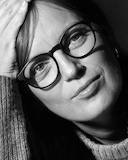 Sarah Polley for Women Talking – Always thoughtful, Sarah Polley returns to directing after a hiatus due to a bad concussion that took her out of commission for a couple of years. By focusing on women as fully realized people with thoughts and opinions all their own (radical, I know) Polley has made a film that does exactly what the title states, Women Talking. When decades of sexual abuse of the women in a religious community by the men in that community is discovered, the women have 24 hours to discuss what the repercussions will be. It’s a deft exploration of a tight knit community the Polley carefully explores in a way that honors all viewpoints and takes full advantage of a dynamic ensemble cast. — mrc Sarah Polley for Women Talking – Always thoughtful, Sarah Polley returns to directing after a hiatus due to a bad concussion that took her out of commission for a couple of years. By focusing on women as fully realized people with thoughts and opinions all their own (radical, I know) Polley has made a film that does exactly what the title states, Women Talking. When decades of sexual abuse of the women in a religious community by the men in that community is discovered, the women have 24 hours to discuss what the repercussions will be. It’s a deft exploration of a tight knit community the Polley carefully explores in a way that honors all viewpoints and takes full advantage of a dynamic ensemble cast. — mrc |
|
 Céline Sciamma for Petite Maman – After the expansive, sweeping romance of her award winning Portrait of a Lady on Fire, Sciamma does something unexpected by focusing in tightly on a small story about a young girl mourning the death of her grandmother, who finds a mysteriously similar friend in the woods. Sciamma draws startlingly adult performances from her two young leads, and through her gentle exploration and dynamic evolution of their friendship reveals a surprising twist in the story. Sciamma’s career as a director has been fascinating to watch, and Petite Maman adds yet another facet to her repertoire. — mrc Céline Sciamma for Petite Maman – After the expansive, sweeping romance of her award winning Portrait of a Lady on Fire, Sciamma does something unexpected by focusing in tightly on a small story about a young girl mourning the death of her grandmother, who finds a mysteriously similar friend in the woods. Sciamma draws startlingly adult performances from her two young leads, and through her gentle exploration and dynamic evolution of their friendship reveals a surprising twist in the story. Sciamma’s career as a director has been fascinating to watch, and Petite Maman adds yet another facet to her repertoire. — mrc |
|
 Apichatpong Weerasethakul for Memoria – Thai auteur Apichatpong Weerasethakul’s first film outside of Asia is no less experimental than his previous work, thankfully. With Tilda Swinton (!) as a Scottish woman in Colombia repeatedly hearing a mysterious, loud popping noise, it gradually evolves into the director’s typically oblique but compelling take on a genre that I don’t want to spoil here, for the journey and experience matters as much as its destination. Like everything else this director has done, it’s slow, perplexing, surprising and one-of-a-kind. –ck Apichatpong Weerasethakul for Memoria – Thai auteur Apichatpong Weerasethakul’s first film outside of Asia is no less experimental than his previous work, thankfully. With Tilda Swinton (!) as a Scottish woman in Colombia repeatedly hearing a mysterious, loud popping noise, it gradually evolves into the director’s typically oblique but compelling take on a genre that I don’t want to spoil here, for the journey and experience matters as much as its destination. Like everything else this director has done, it’s slow, perplexing, surprising and one-of-a-kind. –ck |
|
 Charlotte Wells for Aftersun – Charlotte Wells vaults instantly into “one-to-watch” status with her debut feature Aftersun. Wells positions herself as a master of ambiguity, crafting a vacation tale clouded with an unknown omnipresence that pairs with every heartwarming, relationship-building scene. Welcoming audiences to embrace the father-daughter on-screen relationship while still managing to appeal to that same audience’s sense of hesitation, the feeling of walking on eggshells is not executed anywhere else as expertly as this year’s Aftersun. — br Charlotte Wells for Aftersun – Charlotte Wells vaults instantly into “one-to-watch” status with her debut feature Aftersun. Wells positions herself as a master of ambiguity, crafting a vacation tale clouded with an unknown omnipresence that pairs with every heartwarming, relationship-building scene. Welcoming audiences to embrace the father-daughter on-screen relationship while still managing to appeal to that same audience’s sense of hesitation, the feeling of walking on eggshells is not executed anywhere else as expertly as this year’s Aftersun. — br |
|
Best Actress
|
|
  Dale Dickey for the role of Faye in A Love Song – Dale Dickey is known for playing tough broads that you don’t want to mess with like Merab in Winter’s Bone, or trashy drunks in trailer parks in Blues for Willa Dean, but finally, well into her career, she gets her chance to play a leading lady in a film about long-delayed love. The camera is drawn to her face, and director Max Walker-Silverman clearly loves his leading lady letting intense close-ups adore Dickey’s weather, lined face telling the story of her life nearly without speaking. The emotions that run across Dickey’s face and the lines she speaks when she does feel the need to make a statement a delivered by an actor well versed in her craft, and finally getting to display a new facet of her talent. –mrc Dale Dickey for the role of Faye in A Love Song – Dale Dickey is known for playing tough broads that you don’t want to mess with like Merab in Winter’s Bone, or trashy drunks in trailer parks in Blues for Willa Dean, but finally, well into her career, she gets her chance to play a leading lady in a film about long-delayed love. The camera is drawn to her face, and director Max Walker-Silverman clearly loves his leading lady letting intense close-ups adore Dickey’s weather, lined face telling the story of her life nearly without speaking. The emotions that run across Dickey’s face and the lines she speaks when she does feel the need to make a statement a delivered by an actor well versed in her craft, and finally getting to display a new facet of her talent. –mrc |
|

Alyssa Chia for the role of Lo Pi-wen in The Falls – A mother and daughter find themselves quarantined together during the pandemic, leading to some tense moments. You will wonder if perhaps this is a horror film? or some strange science fiction oddity? Instead it’s a film about a very human struggle that is slowly and deliberately revealed. While directed with skill and compassion, the film is served best by the amazing performance of its two leads, especially Alysssa Chia, a film and TV star in Taiwan. Chia captures the nuance and tragedy of the mother, Lo-pin Wen subtly yet with grace and power. Her dramatic shifts in behavior are startling and confusing, and only made more difficult as the truth comes out. –mrc |
|
 Adèle Exarchopoulos for the role of Cassandre Wassels in Zero Fucks Given – In Zero Fucks Given, Adele Exarchopoulos’s portrayal is very like an actor slipping into an assumed role. By night, an at-loose-ends young woman, she becomes, by day, nearly unrecognizable, made up and in her flight attendant’s uniform both a kind of armor, deflecting the difficulties of her job – rude and abusive passengers, hostile supervisors, business decisions made by unseen bureaucrats – but also a source of power. It’s a remarkable transition, two characters in a single role, and she moves between and embodies them both with precision. When circumstance forces a return home, she reprises yet another role, resuming her place in the family she fled to escape the grief caused by the death of her mother. It is a fascinating and faceted character study which Ms. Exarchopoulos renders fully in all of its facets. — gp Adèle Exarchopoulos for the role of Cassandre Wassels in Zero Fucks Given – In Zero Fucks Given, Adele Exarchopoulos’s portrayal is very like an actor slipping into an assumed role. By night, an at-loose-ends young woman, she becomes, by day, nearly unrecognizable, made up and in her flight attendant’s uniform both a kind of armor, deflecting the difficulties of her job – rude and abusive passengers, hostile supervisors, business decisions made by unseen bureaucrats – but also a source of power. It’s a remarkable transition, two characters in a single role, and she moves between and embodies them both with precision. When circumstance forces a return home, she reprises yet another role, resuming her place in the family she fled to escape the grief caused by the death of her mother. It is a fascinating and faceted character study which Ms. Exarchopoulos renders fully in all of its facets. — gp |
|
 Amber Midthunder for the role of Albee in The Wheel – Steve Pink’s film balances between a tragic breakup, or a healing reconciliation of a young couple who have been a pair since childhood. Catching our attention first in the FX series, “Legion,” Amber Midthunder shows how well she can do character-driven drama in addition to superheroic action. While presenting her abrasiveness like armor, she keeps a fractured interior well hidden, only to be revealed in a heart-breaking moment that echoes beautifully off her co-star, Taylor Gray. — mrc Amber Midthunder for the role of Albee in The Wheel – Steve Pink’s film balances between a tragic breakup, or a healing reconciliation of a young couple who have been a pair since childhood. Catching our attention first in the FX series, “Legion,” Amber Midthunder shows how well she can do character-driven drama in addition to superheroic action. While presenting her abrasiveness like armor, she keeps a fractured interior well hidden, only to be revealed in a heart-breaking moment that echoes beautifully off her co-star, Taylor Gray. — mrc |
|
 Andrea Riseborough for the role of Leslie in To Leslie – In To Leslie, Andrea Riseborough portrays a single mother who wins the lottery but squanders the good fortune when the newfound wealth further enables the surfacing of her debilitating pre-existing internal demons. Riseborough’s performance brings publicly misunderstood vices to the surface, but it’s also the unstated narrative within that this performance so adeptly provides. Leslie’s external struggles are coupled with an unspoken series of cries for help which are overshadowed by the Hyde-like manifestations of her unresolved rage and sense of defeat. — br Andrea Riseborough for the role of Leslie in To Leslie – In To Leslie, Andrea Riseborough portrays a single mother who wins the lottery but squanders the good fortune when the newfound wealth further enables the surfacing of her debilitating pre-existing internal demons. Riseborough’s performance brings publicly misunderstood vices to the surface, but it’s also the unstated narrative within that this performance so adeptly provides. Leslie’s external struggles are coupled with an unspoken series of cries for help which are overshadowed by the Hyde-like manifestations of her unresolved rage and sense of defeat. — br |
|
 Claire Rushbrook for the role of Ava in Ali & Ava– At first, I recognized Claire Rushbrook’s name but not her face; best known for her role as Brenda Blethyn’s daughter in Secrets and Lies, it was a shock to see her a quarter-century older and in a role nearly the tonal opposite she had in the earlier film. Weary but wise, her widower Ava is resilient but also searching as she at first pragmatically, then impulsively opens herself up to the possibility of new love. — ck Claire Rushbrook for the role of Ava in Ali & Ava– At first, I recognized Claire Rushbrook’s name but not her face; best known for her role as Brenda Blethyn’s daughter in Secrets and Lies, it was a shock to see her a quarter-century older and in a role nearly the tonal opposite she had in the earlier film. Weary but wise, her widower Ava is resilient but also searching as she at first pragmatically, then impulsively opens herself up to the possibility of new love. — ck |
|
Best Actor |
|
  Paul Mescal for the role of Callum in Aftersun – This film about the memories from a childhood vacation in Turkey, stars Paul Mescal as Colum, the dad. He’s a young, divorced, somewhat immature father who, in fact, discovers a lot about himself during the vacation with his daughter. The father/ daughter chemistry is beautiful to watch unfold and results in showing a more mature and more hardened Colum. With his amazingly nuanced performance, Mescal continues to impress as an outstanding young actor. — vo Paul Mescal for the role of Callum in Aftersun – This film about the memories from a childhood vacation in Turkey, stars Paul Mescal as Colum, the dad. He’s a young, divorced, somewhat immature father who, in fact, discovers a lot about himself during the vacation with his daughter. The father/ daughter chemistry is beautiful to watch unfold and results in showing a more mature and more hardened Colum. With his amazingly nuanced performance, Mescal continues to impress as an outstanding young actor. — vo |
|
 Adeel Akhtar for the role of Ali in Ali & Ava – Ali comments how is character goes from nought to 70 in minutes, referencing is sometimes manic behavior as he channels his excitement. Whether dancing feverishly atop his car, or dancing with Ava on her sofa, Akhtar embodies the bubbling energy that Ali keeps locked inside. But when face with the emotional speed at which Ava moves Ali is suddenly off guard, his self-assured manner struck with uncertainty, as he wrestle with the love he has trouble releasing for his estranged wife, and the growing feelings for Ava. The chemistry between Akhtar and Best Actress nominee Claire Rushbrook is terrific as well, making Ali and Ava and couple you really root for. –mrc Adeel Akhtar for the role of Ali in Ali & Ava – Ali comments how is character goes from nought to 70 in minutes, referencing is sometimes manic behavior as he channels his excitement. Whether dancing feverishly atop his car, or dancing with Ava on her sofa, Akhtar embodies the bubbling energy that Ali keeps locked inside. But when face with the emotional speed at which Ava moves Ali is suddenly off guard, his self-assured manner struck with uncertainty, as he wrestle with the love he has trouble releasing for his estranged wife, and the growing feelings for Ava. The chemistry between Akhtar and Best Actress nominee Claire Rushbrook is terrific as well, making Ali and Ava and couple you really root for. –mrc |
|
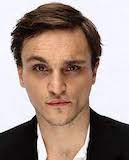 Franz Rogowski for the role of Hans Hoffman in Great Freedom – After making a big impression in a pair of films directed by Christian Petzold (Transit; Undine), as well as Michael Haneke’s Happy End, it was so exciting to see him take control of the screen as Hans Hoffman in Great Freedom). Playing a homosexual in post-WWII Germany, where paragraph 175 still legally forbad homosexual acts, Rogowski shows us the full range of the gay experience under siege. First arrested for soliciting sex in public toilets, then being taken into custody from the privacy of his own home with his life-partner, Hoffman soon becomes a man more accustomed to life in prison that with the freedoms outside. Rogowski is unapologetic, moving, and thoroughly believable in this powerful role. He’s certainly an actor to keep an eye on. — mrc Franz Rogowski for the role of Hans Hoffman in Great Freedom – After making a big impression in a pair of films directed by Christian Petzold (Transit; Undine), as well as Michael Haneke’s Happy End, it was so exciting to see him take control of the screen as Hans Hoffman in Great Freedom). Playing a homosexual in post-WWII Germany, where paragraph 175 still legally forbad homosexual acts, Rogowski shows us the full range of the gay experience under siege. First arrested for soliciting sex in public toilets, then being taken into custody from the privacy of his own home with his life-partner, Hoffman soon becomes a man more accustomed to life in prison that with the freedoms outside. Rogowski is unapologetic, moving, and thoroughly believable in this powerful role. He’s certainly an actor to keep an eye on. — mrc |
|
 Christopher Abbott for the role of Kevin in On the Count of Three – Christopher Abbott’s hair here has rarely looked worse onscreen (he’s accurately called “Ramen Noodle Head” by another character); fortunately, it supports one of his best performances. As the troubled Kevin, he’s first established as a buddy to protagonist Val (writer/director Jerrod Carmichael) but soon enough, his presence and arc is given as much attention (if not more.) The screenplay allows for Kevin’s development but Abbott’s charisma and natural approach should also be credited for turning him into something much richer than the wild-card best friend. — ck Christopher Abbott for the role of Kevin in On the Count of Three – Christopher Abbott’s hair here has rarely looked worse onscreen (he’s accurately called “Ramen Noodle Head” by another character); fortunately, it supports one of his best performances. As the troubled Kevin, he’s first established as a buddy to protagonist Val (writer/director Jerrod Carmichael) but soon enough, his presence and arc is given as much attention (if not more.) The screenplay allows for Kevin’s development but Abbott’s charisma and natural approach should also be credited for turning him into something much richer than the wild-card best friend. — ck |
|
 Tim Roth for the role of Neil Bennett in Sundown – Tim Roth gives us a muted performance in this story, as a man who chooses the moment of his mother’s death to run away from life, as quietly as possible and without a backward look at the family, wealth or status.he has just left behind. Pretending to have left his passport at the luxe Acapulco hotel,as they pull up to the airport, he tells his travel companions — his sister and neiblings — to fly home to England without him, he will retrieve the passport and “catch up to them”. He returns to the beach, finds himself a beautiful companion (with possible connections to drug lords, kidnappers, and various people with guns), while ignoring his sister’s increasingly anxious pleas to return home as Mexico proves to be an unsavory and unsafe harbor. — kp Tim Roth for the role of Neil Bennett in Sundown – Tim Roth gives us a muted performance in this story, as a man who chooses the moment of his mother’s death to run away from life, as quietly as possible and without a backward look at the family, wealth or status.he has just left behind. Pretending to have left his passport at the luxe Acapulco hotel,as they pull up to the airport, he tells his travel companions — his sister and neiblings — to fly home to England without him, he will retrieve the passport and “catch up to them”. He returns to the beach, finds himself a beautiful companion (with possible connections to drug lords, kidnappers, and various people with guns), while ignoring his sister’s increasingly anxious pleas to return home as Mexico proves to be an unsavory and unsafe harbor. — kp |
|
Best Supporting Actress |
|
  Kerry Condon for the role of Siobhán Súilleabháin in The Banshees of Inisherin – The Banshees of Inisherin is prominently headlined by a falling out and the subsequent landslide between two friends. However, the collateral damage displayed from Supporting Actress nominee Kerry Condon not only draws attention to her own portrayal of Siobhán, but it elevates the effectiveness of the performances of her fellow cast members simultaneously. Carrying a sense of duty both in keeping her brother cared for after the loss of their parents and as peacemaker in the present tense, the heightening of Condon’s internal struggles and understated backstory couples perfectly with the central conflict featured in the film as we see her character bloom beyond the confines of an island that so many others cannot escape. — br Kerry Condon for the role of Siobhán Súilleabháin in The Banshees of Inisherin – The Banshees of Inisherin is prominently headlined by a falling out and the subsequent landslide between two friends. However, the collateral damage displayed from Supporting Actress nominee Kerry Condon not only draws attention to her own portrayal of Siobhán, but it elevates the effectiveness of the performances of her fellow cast members simultaneously. Carrying a sense of duty both in keeping her brother cared for after the loss of their parents and as peacemaker in the present tense, the heightening of Condon’s internal struggles and understated backstory couples perfectly with the central conflict featured in the film as we see her character bloom beyond the confines of an island that so many others cannot escape. — br |
|
 Carly-Sophia Davies for the role of hotel receptionist in The Eternal Daughter – Praised by just about every reviewer, Davis gives the film comedic bite as a hotel receptionist whose motto seems to be “I couldn’t care less.” In this, her screen debut, she’s one teakettle short of hostile, playing against anxious and well-mannered Julie. Her hard looks and cold voice create a fine antagonist in this quiet, haunting story. Toward the end of the film, it’s Davis who ushers us through a critical transition and helps us understand what we’ve seen. –djy Carly-Sophia Davies for the role of hotel receptionist in The Eternal Daughter – Praised by just about every reviewer, Davis gives the film comedic bite as a hotel receptionist whose motto seems to be “I couldn’t care less.” In this, her screen debut, she’s one teakettle short of hostile, playing against anxious and well-mannered Julie. Her hard looks and cold voice create a fine antagonist in this quiet, haunting story. Toward the end of the film, it’s Davis who ushers us through a critical transition and helps us understand what we’ve seen. –djy |
|
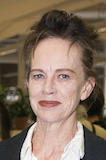 Judy Davis for the role of Mum in Nitram – You can’t accuse veteran performer Judy Davis of not having range. In direct contrast to her vehement divorcee in Husbands and Wives and the delectably catty gossip columnist Hedda Hopper in Feud: Bette and Joan, she practically fades into the wallpaper in Justin Kurzel’s film about events leading up to the 1996 Port Arthur Massacre. As the mother of a mass-murderer, she appears unremarkably plain—an ideal mask for her acidic commentary, withholding nature and near psychopathic tendencies which all contribute to an inability to provide necessary emotional support for her troubled son. — ck Judy Davis for the role of Mum in Nitram – You can’t accuse veteran performer Judy Davis of not having range. In direct contrast to her vehement divorcee in Husbands and Wives and the delectably catty gossip columnist Hedda Hopper in Feud: Bette and Joan, she practically fades into the wallpaper in Justin Kurzel’s film about events leading up to the 1996 Port Arthur Massacre. As the mother of a mass-murderer, she appears unremarkably plain—an ideal mask for her acidic commentary, withholding nature and near psychopathic tendencies which all contribute to an inability to provide necessary emotional support for her troubled son. — ck |
|
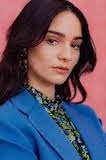 Aisling Franciosi for the role of Sarah Murphy in God’s Creatures – Aisling Franciosi for the role of Sarah Murphy in God’s Creatures – |
|
 Allison Janney for the role of Nancy in To Leslie – Allison Janney for the role of Nancy in To Leslie – |
|
 Thomasin McKenzie for the role of Tonyah in The Justice of Bunny King – It’s a joy to watch the journey McKenzie takes with her character Tonyah, a young girl being abused by her father. When her itinerant aunt catches the abuse in progress, McKenzie pulls out a range of emotions from defensiveness, regret, anger, recrimination, and eventually an understanding of her quirky aunt that belies her age. With a series of tough roles in her back pocket, Thomasin McKenzie is well on her way to becoming a powerhouse actor for tough family dramas. — mrc Thomasin McKenzie for the role of Tonyah in The Justice of Bunny King – It’s a joy to watch the journey McKenzie takes with her character Tonyah, a young girl being abused by her father. When her itinerant aunt catches the abuse in progress, McKenzie pulls out a range of emotions from defensiveness, regret, anger, recrimination, and eventually an understanding of her quirky aunt that belies her age. With a series of tough roles in her back pocket, Thomasin McKenzie is well on her way to becoming a powerhouse actor for tough family dramas. — mrc |
|
Best Supporting Actor |
|
  BarryKeoghan for the role of Dominic Kearney in The Banshees of Inisherin – Barry Keoghan’s performance in The Banshees of Inisherin is the kind of character portrayal that gels so well with the main conflict of the narrative that it might seem at first as if his all-too-natural jitteriness is as fitting as the awkwardness in the words of the script itself. The full appreciation for the nuance and execution involved becomes even more jaw-dropping with each additional viewing of the film. Keoghan’s Dominic has a unique brand of intelligence and understanding that comes from being worn out by the abusive world around him. The dry-mouthed, nervous portrayal provides the perfect reflecting surface for a film full of its own variations of awkwardness and cringeworthy social situations. — br BarryKeoghan for the role of Dominic Kearney in The Banshees of Inisherin – Barry Keoghan’s performance in The Banshees of Inisherin is the kind of character portrayal that gels so well with the main conflict of the narrative that it might seem at first as if his all-too-natural jitteriness is as fitting as the awkwardness in the words of the script itself. The full appreciation for the nuance and execution involved becomes even more jaw-dropping with each additional viewing of the film. Keoghan’s Dominic has a unique brand of intelligence and understanding that comes from being worn out by the abusive world around him. The dry-mouthed, nervous portrayal provides the perfect reflecting surface for a film full of its own variations of awkwardness and cringeworthy social situations. — br |
|
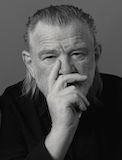 Brendan Gleeson for the role of Colm Doherty in The Banshees of Inisherin – In The Banshees of Inisherin, Brendon Gleeson’s role provides a fulcrum by which the entire narrative must pivot. Playing a character with a startling behind-the-scenes character shift that occurs before the on-screen narrative even starts, Gleeson’s ability to urge audiences to try to peel back layers of Colm’s no-nonsense demeanor is a suspenseful character study even though the character’s lines indicate there is no room to budge. Balancing this contradiction of straight-forward dialogue and still questionable motive might lead one to realize that matter-of-factness may have never been so subject to scrutiny and questioning by an audience as it is here. — br Brendan Gleeson for the role of Colm Doherty in The Banshees of Inisherin – In The Banshees of Inisherin, Brendon Gleeson’s role provides a fulcrum by which the entire narrative must pivot. Playing a character with a startling behind-the-scenes character shift that occurs before the on-screen narrative even starts, Gleeson’s ability to urge audiences to try to peel back layers of Colm’s no-nonsense demeanor is a suspenseful character study even though the character’s lines indicate there is no room to budge. Balancing this contradiction of straight-forward dialogue and still questionable motive might lead one to realize that matter-of-factness may have never been so subject to scrutiny and questioning by an audience as it is here. — br |
|
 Anders Danielsen Lie for the role of Aksel in The Worst Person in the World – Anders Danielsen Lie for the role of Aksel in The Worst Person in the World – |
|
 Matthew Maher for the role of Wallace in Funny Pages – Matthew Maher for the role of Wallace in Funny Pages – |
|
 Eddie Marsan for the role of Jonas in Vesper – For the post-apocalyptic tale of genetic engineering gone wrong and class struggle, among other themes, Eddie Marsan plays a critical role as the film’s primary antagonist. Though he could easily be a caricature of evil (and is certainly ruthless and unsentimental), Marsan plays the character as a bit more complex. In an understated performance, he allows consideration of his relationship with Vesper (his niece) and her father (his brother) to mitigate his penchant for cruelty. An excellent performance in a small but critical role. — tp/pe Eddie Marsan for the role of Jonas in Vesper – For the post-apocalyptic tale of genetic engineering gone wrong and class struggle, among other themes, Eddie Marsan plays a critical role as the film’s primary antagonist. Though he could easily be a caricature of evil (and is certainly ruthless and unsentimental), Marsan plays the character as a bit more complex. In an understated performance, he allows consideration of his relationship with Vesper (his niece) and her father (his brother) to mitigate his penchant for cruelty. An excellent performance in a small but critical role. — tp/pe |
|
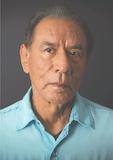 Wes Studi for the role of Lito in A Love Song – Wes Studi brings the gravity and groundedness of his past supporting role in action movies and applies it powerfully to the gentle, soft-spoken leading man in A Love Song. Two people who share a romantic past in their high school days, reunite after a lifetime to see if there is any chemistry left to spark. Chlotrudis Best Actress nominee Dale Dickey nd Studi complement each other beautifully, and convey so much emotion with some awkward exchanged dialog and meaningful looks. It’s a lovely look at adult romance. — mrc Wes Studi for the role of Lito in A Love Song – Wes Studi brings the gravity and groundedness of his past supporting role in action movies and applies it powerfully to the gentle, soft-spoken leading man in A Love Song. Two people who share a romantic past in their high school days, reunite after a lifetime to see if there is any chemistry left to spark. Chlotrudis Best Actress nominee Dale Dickey nd Studi complement each other beautifully, and convey so much emotion with some awkward exchanged dialog and meaningful looks. It’s a lovely look at adult romance. — mrc |
|
Best Original Screenplay |
|
 Aftersun, screenplay by Charlotte Wells – A woman’s recollection of her pre-adolescent years and particularly, a holiday spent with her father at a Greek resort is told through the hazy lens of the intervening years. Writer/director Charlotte Wells captures that sense of recollection and nostalgia in a screenplay that is both sublime and frustrating, the way memory often can be. Some moments take on an exaggerated sense of detail and importance, while others seem fragmented and without definition. Wells elegant screenplay is a triumphant debut. –mrc Aftersun, screenplay by Charlotte Wells – A woman’s recollection of her pre-adolescent years and particularly, a holiday spent with her father at a Greek resort is told through the hazy lens of the intervening years. Writer/director Charlotte Wells captures that sense of recollection and nostalgia in a screenplay that is both sublime and frustrating, the way memory often can be. Some moments take on an exaggerated sense of detail and importance, while others seem fragmented and without definition. Wells elegant screenplay is a triumphant debut. –mrc |
|
| The Banshees of Inisherin, screenplay by Martin McDonagh – On stage and on screen, writer/director Martin McDonagh has repeatedly proven himself a provocateur, gleefully diving into controversial and transgressive subject matter; his latest film initially seems like a departure for its relatively simple story of a faltering friendship between two men on a remote isle off the coast of Ireland a century ago. However, he reveals that nothing is straightforward about the dissolution of such a bond, especially when the intent is not mutual between its participants. A dark comedy gradually subsumed by tragedy, it asks deep questions about relationships and what we expect of them. — ck | |
| Playground, screenplay by Laura Wandel – There have been many great films about bullying, but rarely do we see such a complex, chilling examination of the politics of the playground as writer/director Laura Wandel constructs for Playground. When 7-year-old Nora witnesses her older brother being repeatedly bullied at school she finds that the adults around her are incapable of the support she needs. She moves through a powerfully protrayed series of emotional shifts first to protect her brother and then herself in this harrowing tale. in just 72 minutes, and with an intricacy that honors its subject Wandel crafts a story that is as disturbing as it is empathetic. — mrv | |
| Triangle of Sadness, screenplay by Ruben Östlund – |
|
| The Wheel, screenplay by Trent Atkinson – TheWheel ponders whether love can heal someone with unresolved trauma who may not know what they have until they are about to lose them. Screenwriter Trent Atkinson explores the relationship of a young couple who have been allies and friends since childhood and escape on a weekend retreat in the wilderness to determine whether they can continue, or end things. His insights reveal themselves in unpredictable yet true ways over the film’s short running time — and trusts that audiences are grown up enough to recognize that relationships take effort. — mrc |
|
Best Adapted Screenplay |
|
 After Yang, screenplay by Kogonada, based on the short story by Alexander Weinstein – For his second feature, South Korean-American director Kogonada chose to adapt a short story imagining a future where people can purchase lifelike robotic beings as family companions—a potentially creepy premise that instead glistens with life-affirming possibilities. Somewhat more accessible and also genre-defying than his last film Columbus without lessening the qualities that made it unique, it’s science fiction without walls, exploring artifice and memory and what it could look like if the two would ever intersect. — ck After Yang, screenplay by Kogonada, based on the short story by Alexander Weinstein – For his second feature, South Korean-American director Kogonada chose to adapt a short story imagining a future where people can purchase lifelike robotic beings as family companions—a potentially creepy premise that instead glistens with life-affirming possibilities. Somewhat more accessible and also genre-defying than his last film Columbus without lessening the qualities that made it unique, it’s science fiction without walls, exploring artifice and memory and what it could look like if the two would ever intersect. — ck |
|
| All Quiet on the Western Front, screenplay by Edward Berger, Lesley Paterson, Ian Stokell, based on the novel by Erich Maria Remarque – This third film adaptation of Erich Maria Remarque’s 1928 anti-war novel is the first German version. It does not shy away from Remarque’s description of gore and brutality on the front. But where the WWI novel is told entirely from the perspective of a young soldier, these writers have added suspense—and more historical context—through a parallel storyline about negotiations to end the war, which take place in an elegant setting. Will a ceasefire be declared before harm comes to the young men in the trenches? — djy | |
| Compartment Number 6, screenplay by Andris Feldmanis, Juho Kuosmanen, Livia Ulman, based on the novel by Rosa Liksom – An opening sequence of Compartment No. 6 notes that escaping does not require knowing where you are running, but from where. Strangers on a train, an intellectual in a tumultuous love affair in Moscow and a Russian miner equally filled with a confused yearning, both are written without clear destinations, but through the clever relatability crafted from the film’s writing team, audiences forge ahead, crammed within tight sleeping car quarters, into the great unknown that awaits so many audience members who purchase their own daily travel tickets toward the search for fulfillment. — br | |
| Drive My Car, screenplay by Ryûsuke Hamaguchi, Takamasa Ôe, based on short stories by Haruki Murakami – The script is finely adapted from two of Murakami’s short stories from his collection, Men Without Women. Yusuke Kafuku, a stage and screen actor, is directing an updated production of Uncle Vanya with a uniquely inclusive cast at an upcoming theater festival. The festival producers provide him with young woman, 20-year old Misaki, as his driver, due to Kafuku’s habit of reading scripts/rehearsing lines while on the way to the theater. Misaki and Kafuku make tentative steps toward friendship, by revealing some of their personal stories — Kafuku describes meeting his wife-to-be on a movie set, her infidelities after their only child dies, and meeting with one of her former lovers, in an attempt to understand why their life together became so muted by their despair. Misaki explains how she came to be a driver, while looking for an avenue of escape from her abusive mother and dead-beat dad. The two bond and eventually recognize that all of us are “actors”, playing our expected roles, repeating stale lines from rote memory; “living” means taking the challenge to drop the script and improvise our own lives. — kp | |
| Women Talking, screenplay by Sarah Polley and Miriam Toews, based on the novel by Miriam Toews – One of the biggest changes made when adapting Women Talking from novel to film, was the point-of-view. In Miriam Toews book, the story is told by August, the lone male figure in a days-long conversation among women. Diretor Sarah Polley, along with Toews, wisely changed that for the film to the point-of-view of one of the younger women among the group, telling a newborn their story. It’s smart, it’s insightful, and it works… which is why Polley is an acclaimed writer and director. — mrc | |
Best Use of Music in a Film |
|
 Ali & Ava, Connie Farr, Music Supervisor – Music is central to the unfolding love story between two mature adults set in Bradford, a working-class, predominantly white housing estate of Holme Wood. Ali is a landlord, and a part-time dj who’s into trip hop and rap, while Ava, is a teaching assistant who prefers the sounds of country and folk. They bond through their music, and one exquisite scene features the pair dancing with earbuds – each to their own music in a scene that beautifully captures their unfolding relationship. Bob Dylan is also a central figure in the story, as the two try to come together through their shared love of very different music. — mrc Ali & Ava, Connie Farr, Music Supervisor – Music is central to the unfolding love story between two mature adults set in Bradford, a working-class, predominantly white housing estate of Holme Wood. Ali is a landlord, and a part-time dj who’s into trip hop and rap, while Ava, is a teaching assistant who prefers the sounds of country and folk. They bond through their music, and one exquisite scene features the pair dancing with earbuds – each to their own music in a scene that beautifully captures their unfolding relationship. Bob Dylan is also a central figure in the story, as the two try to come together through their shared love of very different music. — mrc |
|
| Aftersun, Lucie Bright, Music Supervisor – From the uncomfortable moments of an REM, Losing My Religion karaoke number, to the transcendent, but clearly vital scene revolving around Queen & David Bowie’s Under Pressure, director Charlotte Wells clearly wanted very specific songs to tell this autobiographical memory piece about her coming-of-age during a resort vacation with her dad. The music in Aftersun isn’t used for emotional short-cutting, but to make a strong and necessary point in a young woman’s life. — mrc | |
| God’s Creatures, Juliette Martin, Music Supervisor – | |
| Leonor Will Never Die, Alyana Cabral, Music Director – | |
| Neptune Frost, Saul Williams, Composer – When Neptune Frost is described as a dystopian, science fiction, afro-futurist, gender-fluid, musical there’s no exaggeration, and the way that music is used to tell the story is both traditional and innovative. Using the roots of black worker songs and spirituals of old, to more modern hip hop compositions, composer Saul Williams blends different styles together and makes it all seem both ancient and futuristic. It’s definitely the sound of a future coming close. –mrc | |
| Stars at Noon,, Rebecca Delannet, Astrid Gomez-Montoya, Lea Taugourdeau, Music Supervisors – Veteran English rock-noir band Tindersticks is to Claire Denis what the late Angelo Badalamenti was to David Lynch; unlike Badalamenti, however, their scores vary significantly from film to film. Having worked on most of Denis’ features since Trouble Every Day (2001), their latest is up there with their evocative music for 35 Shots of Rum (2008). The somewhat jazzy, lounge-friendly, modest Latin rhythms vibe perfectly with the film’s Nicaraguan setting, its sense of nimbly falling down a rabbit hole of undisclosed motives and its persistent itch to escape confined surroundings. — ck | |
Best Sound Design |
|
  Memoria, Akritchalerm Kalayanamitr, Sound Designer – The entire premise thatvApichatpong Weerasethakul’s Memoria is based upon is a mysterious, intrusive, starting sound that haunts Jessica Holland as she tries to live her life. She seeks all manner of counsel and research to determine the source of this sound, even going to far as to seek out a sound technician to help her recreate it. Sound Designer Akritchalerm Kalayanamitr creates that signature sound to haunt the viewer, and as a basis for additional unusual sounds that are reveals in the conclusion. — mrc Memoria, Akritchalerm Kalayanamitr, Sound Designer – The entire premise thatvApichatpong Weerasethakul’s Memoria is based upon is a mysterious, intrusive, starting sound that haunts Jessica Holland as she tries to live her life. She seeks all manner of counsel and research to determine the source of this sound, even going to far as to seek out a sound technician to help her recreate it. Sound Designer Akritchalerm Kalayanamitr creates that signature sound to haunt the viewer, and as a basis for additional unusual sounds that are reveals in the conclusion. — mrc |
|
 Leonor Will Never Die, Corinne De San Jose, Sound – Leonor Will Never Die takes place both in present day reality, and within the mind of a comatose screenwriter (Leonor) as she stars in her own action film within her head. Along with the more everyday sounds of modern-day Philippines, designer Corinne De San Jose had to re-create sonic environments for a distinctive type of 1980s action film. Creative elements such as deliberately creating slightly out-of-sync dialog, and mimicking noise and warble of a not-so-pristine copy of the film (which is how many of us might have viewed such films back then), she draws the viewer into an authentic-feeling world, despite the comically surreal premise. — tp/pe Leonor Will Never Die, Corinne De San Jose, Sound – Leonor Will Never Die takes place both in present day reality, and within the mind of a comatose screenwriter (Leonor) as she stars in her own action film within her head. Along with the more everyday sounds of modern-day Philippines, designer Corinne De San Jose had to re-create sonic environments for a distinctive type of 1980s action film. Creative elements such as deliberately creating slightly out-of-sync dialog, and mimicking noise and warble of a not-so-pristine copy of the film (which is how many of us might have viewed such films back then), she draws the viewer into an authentic-feeling world, despite the comically surreal premise. — tp/pe |
|
 The Eternal Daughter, Jovan Ajder, Supervising Sound Editor – Joanna Hogg uses an intriguing metaphor to tell a story about an adult daughter trying to undertand her aging mother by writing a film about here. The Eternal Daughter is structured as a gothic horror film, with all the visuals that entails, but more importantly, the sound design heightens nearly every moment of the film. When our lead character settles down to sleep each night, the sounds from the surrounding environment create a chilling overlay to her insomnia. Are these sounds real? Imagined? In her own head? The sweeping winds and outdoor sounds that assail her when she walks her dog do the same. It’s a beautifully crafted sound design. — mrc The Eternal Daughter, Jovan Ajder, Supervising Sound Editor – Joanna Hogg uses an intriguing metaphor to tell a story about an adult daughter trying to undertand her aging mother by writing a film about here. The Eternal Daughter is structured as a gothic horror film, with all the visuals that entails, but more importantly, the sound design heightens nearly every moment of the film. When our lead character settles down to sleep each night, the sounds from the surrounding environment create a chilling overlay to her insomnia. Are these sounds real? Imagined? In her own head? The sweeping winds and outdoor sounds that assail her when she walks her dog do the same. It’s a beautifully crafted sound design. — mrc |
|
 Playground, Corinne Dubien, David Vranken, Sound Editors – Playground, Corinne Dubien, David Vranken, Sound Editors – |
|
 Watcher, Frederic Dubois, Supervising Sound Editor – The slow-burn thriller Watcher explores the desperation of a woman out of her element in Bucharest, not speaking the language and convinced (unlike her husband and the police) that a mysterious man is stalking and threatening her. The film is often very quiet, centered on a large relatively empty apartment. Avoiding horror cliches of jump scares, it opts for a simmering tension. Even dialog (as there is a good amount of un-subtitled Romanian in the film) is used a device to highlight her sense of isolation. Overall, the sound is a key element in creating the mood and sense of unease at the core of the film. — tp/pe Watcher, Frederic Dubois, Supervising Sound Editor – The slow-burn thriller Watcher explores the desperation of a woman out of her element in Bucharest, not speaking the language and convinced (unlike her husband and the police) that a mysterious man is stalking and threatening her. The film is often very quiet, centered on a large relatively empty apartment. Avoiding horror cliches of jump scares, it opts for a simmering tension. Even dialog (as there is a good amount of un-subtitled Romanian in the film) is used a device to highlight her sense of isolation. Overall, the sound is a key element in creating the mood and sense of unease at the core of the film. — tp/pe |
|
Best Editing |
|
  Kim Sang-beom, Decision to Leave – Kim Sang-beom, Decision to Leave – |
|
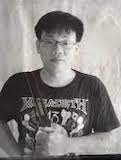 Lawrence Ang, Leonor Will Never Die – Leonor Will Never Die is the story of a retired screenwriter, a bit bored with family life as a widow, who becomes comatose after a head injury, thereby entering a world where her script has come to life. The film alternates between the two worlds of reality and her head (the film), balancing the comic absurdity of 1980s action films, as well as her unlikely participation in one, as well as the more “earthy” considerations of lost dreams and family bonds. Truly a uniquely crafted work. –tp/pe Lawrence Ang, Leonor Will Never Die – Leonor Will Never Die is the story of a retired screenwriter, a bit bored with family life as a widow, who becomes comatose after a head injury, thereby entering a world where her script has come to life. The film alternates between the two worlds of reality and her head (the film), balancing the comic absurdity of 1980s action films, as well as her unlikely participation in one, as well as the more “earthy” considerations of lost dreams and family bonds. Truly a uniquely crafted work. –tp/pe |
|
 Blair McClendon, Aftersun – Charlotte Wells’s affecting emotional meander succeeds on a myriad of levels, acting, writing, direction etc., however the most compellingly scene are the film’s last ten minutes scored to the classic Queen/Bowie collaboration “Under Pressure” where father (Paul Mescal) and daughter (Frankie Corio) dance at a strobe light veranda, made enigmatic and more profound by Blair McClendon’s taut, beat-synching editing. The flash cuts and jump movement mesmerize and set up the final transition, one in time and emotional maturation, that punctuates the film profound, moving wonderment. — tm Blair McClendon, Aftersun – Charlotte Wells’s affecting emotional meander succeeds on a myriad of levels, acting, writing, direction etc., however the most compellingly scene are the film’s last ten minutes scored to the classic Queen/Bowie collaboration “Under Pressure” where father (Paul Mescal) and daughter (Frankie Corio) dance at a strobe light veranda, made enigmatic and more profound by Blair McClendon’s taut, beat-synching editing. The flash cuts and jump movement mesmerize and set up the final transition, one in time and emotional maturation, that punctuates the film profound, moving wonderment. — tm |
|
 Brett Morgen, Moonage Daydream – Brett Morgen, Moonage Daydream – |
|
 Joana Scrinzi, Great Freedom – Many films move back and forth in time but relatively few do so with enough subtlety to the allow the viewer in on the act of discovery without feeling deceived or manipulated. The beauty of this story of Hans (Franz Rogowski), a man repeatedly jailed for homosexual activity under Germany’s infamous Paragraph 175 law is in how fluidly it shifts between different eras, often revealing them only with the appearance (or disappearance) of telltale sign such as a moustache or convincing makeup. — ck Joana Scrinzi, Great Freedom – Many films move back and forth in time but relatively few do so with enough subtlety to the allow the viewer in on the act of discovery without feeling deceived or manipulated. The beauty of this story of Hans (Franz Rogowski), a man repeatedly jailed for homosexual activity under Germany’s infamous Paragraph 175 law is in how fluidly it shifts between different eras, often revealing them only with the appearance (or disappearance) of telltale sign such as a moustache or convincing makeup. — ck |
|
Best Cinematography |
|
  Kim Ji-yong, Decision to Leave – For his incredibly stylish and complex film Decision to Leave, Park Chan-wook uses all the tools that make up a great noir film, not the least of which is Kim Ji-yong’s cinematography. Each scene is shot with such careful consideration of the camera’a placement that the desired effect, whether disorientation or fascination, is clearly conveyed by the visuals alone. Kim effectively conveys the desired atmosphere through the use of light and shadow, harkening back to a long-past age of cinema, even in a decidedly contemporary setting. Park certainly knows how to choose his DP’s as this is the second of his films to be nominated for a Best Cinematography Chlotrudis Awards following The Handmaiden, — mrc Kim Ji-yong, Decision to Leave – For his incredibly stylish and complex film Decision to Leave, Park Chan-wook uses all the tools that make up a great noir film, not the least of which is Kim Ji-yong’s cinematography. Each scene is shot with such careful consideration of the camera’a placement that the desired effect, whether disorientation or fascination, is clearly conveyed by the visuals alone. Kim effectively conveys the desired atmosphere through the use of light and shadow, harkening back to a long-past age of cinema, even in a decidedly contemporary setting. Park certainly knows how to choose his DP’s as this is the second of his films to be nominated for a Best Cinematography Chlotrudis Awards following The Handmaiden, — mrc |
|
 Matthew Chuang, You Won’t Be Alone – Matthew Chuang captures an 18th century rural peasant vibe in this Macadenonian film where superstition, witchcraft, and nature worship hold away. The main character, the young witch Nevena, lives isolated in a cave for her first 16 years, only seeing her mother occasionally to get food. When she is finally allowed out into the world, Nevena’s knowledge of life is expressed in a strange poetic language she has constructed, born of interactions with weather and birdsong. Her deep and magical connection to nature is seen via the film’s lush photography and sound: rain dripping from trees, animals cavorting in meadows, humans skulking in the forest. Emotions emerge from her contact with all that she is learning anew, as she enters the realm of humanity with all its wonders and dangers. You Won’t Be Alone is a visual feast and a mystical, sensual masterpiece. –pa Matthew Chuang, You Won’t Be Alone – Matthew Chuang captures an 18th century rural peasant vibe in this Macadenonian film where superstition, witchcraft, and nature worship hold away. The main character, the young witch Nevena, lives isolated in a cave for her first 16 years, only seeing her mother occasionally to get food. When she is finally allowed out into the world, Nevena’s knowledge of life is expressed in a strange poetic language she has constructed, born of interactions with weather and birdsong. Her deep and magical connection to nature is seen via the film’s lush photography and sound: rain dripping from trees, animals cavorting in meadows, humans skulking in the forest. Emotions emerge from her contact with all that she is learning anew, as she enters the realm of humanity with all its wonders and dangers. You Won’t Be Alone is a visual feast and a mystical, sensual masterpiece. –pa |
|
 James Friend, All Quiet on the Western Front – All Quiet on the Western Front is a harrowing piece of filmmaking. It captures the grim reality of war while exposing the German’s heinous actions. The film is masterfully shot. Every camera angle and camera move is deliberate. Friend uses lighting brilliantly. For example, he uses lighting to juxtapose the cold bloody reality of the battlefield with the opulent dining room scene where the war is discussed around a round table. This is just one of the cinematographer’s brilliant techniques. — vo James Friend, All Quiet on the Western Front – All Quiet on the Western Front is a harrowing piece of filmmaking. It captures the grim reality of war while exposing the German’s heinous actions. The film is masterfully shot. Every camera angle and camera move is deliberate. Friend uses lighting brilliantly. For example, he uses lighting to juxtapose the cold bloody reality of the battlefield with the opulent dining room scene where the war is discussed around a round table. This is just one of the cinematographer’s brilliant techniques. — vo |
|
 Shai Goldman, Ahed’s Knee – Crackling with propulsive energy and powered by fierce physicality from lead actor Avshalom Pollak, himself a cinematographer, Ahed’s Knee explores the lead character, an Israeli filmmaker presenting one of his films in a small town, and his struggle against the government’s censorious agenda. His arrival is wrapped in driving music and a sweeping expanse of the desert landscape, harsh and unforgiving, yet incredibly beautiful that this film’s cinematographer, Shai Goldman uses like another main character, bringing shape to the story. Intense close-ups during an extensive interview between the fictional filmmaker and his government-employed host ratchets up the discomfort. — mrc Shai Goldman, Ahed’s Knee – Crackling with propulsive energy and powered by fierce physicality from lead actor Avshalom Pollak, himself a cinematographer, Ahed’s Knee explores the lead character, an Israeli filmmaker presenting one of his films in a small town, and his struggle against the government’s censorious agenda. His arrival is wrapped in driving music and a sweeping expanse of the desert landscape, harsh and unforgiving, yet incredibly beautiful that this film’s cinematographer, Shai Goldman uses like another main character, bringing shape to the story. Intense close-ups during an extensive interview between the fictional filmmaker and his government-employed host ratchets up the discomfort. — mrc |
|
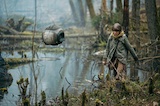 Feliksas Abrukauskas, Vesper – Creating a world that blends a post-apocalyptic futurism with a Grimm’s fairy tale feel, Cinematographer Feliksas Abrukauskas shows us both a bleak, desaturated, often foggy landscape, as well as dimly lit and often primitive interiors. Occasional splashes of color are seen in hidden labs or in nature, perhaps symbolizing a sliver of hope amid widespread deprivation. Finally, he deftly integrates in-camera and CGI integration with the ever-present “father drone,” a unique and important character in the film. Overall, he portrays a compelling world that is both familiar and eerily menacing. — tp/pe Feliksas Abrukauskas, Vesper – Creating a world that blends a post-apocalyptic futurism with a Grimm’s fairy tale feel, Cinematographer Feliksas Abrukauskas shows us both a bleak, desaturated, often foggy landscape, as well as dimly lit and often primitive interiors. Occasional splashes of color are seen in hidden labs or in nature, perhaps symbolizing a sliver of hope amid widespread deprivation. Finally, he deftly integrates in-camera and CGI integration with the ever-present “father drone,” a unique and important character in the film. Overall, he portrays a compelling world that is both familiar and eerily menacing. — tp/pe |
|
 Anisia Uzeyman, Neptune Frost – In Neptune Frost, nighttime is luminous, a fever dream, and daytime is mundane. The camera moves, in and out, side-to-side, pauses and spins, restless, rakes across a cruel mine, a wasteland refuse heap, traverses a human chorus, energetic in protest. The camera’s job is to build an imagined world, a futurist world. Sometimes it captivates. Sometimes it astonishes. Sometimes it repels. The camera is there, seeing every detail, building the world. — jp Anisia Uzeyman, Neptune Frost – In Neptune Frost, nighttime is luminous, a fever dream, and daytime is mundane. The camera moves, in and out, side-to-side, pauses and spins, restless, rakes across a cruel mine, a wasteland refuse heap, traverses a human chorus, energetic in protest. The camera’s job is to build an imagined world, a futurist world. Sometimes it captivates. Sometimes it astonishes. Sometimes it repels. The camera is there, seeing every detail, building the world. — jp |
|
Best Production Design |
|
  Alexandra Schaller, After Yang – After Yang is a science fiction drama film about a family who must confront their own emotions and relationships with technology when their robotic family member malfunctions. The production design is an integral part of the film’s aesthetic, which creates a futuristic world that is both sterile and bleak. The film is set in the near future, and the production design team, led by the production designer, Alexandra Schaller, has done an excellent job of creating a world that feels like it’s not too far removed from our current reality. Alexandra Schaller, After Yang – After Yang is a science fiction drama film about a family who must confront their own emotions and relationships with technology when their robotic family member malfunctions. The production design is an integral part of the film’s aesthetic, which creates a futuristic world that is both sterile and bleak. The film is set in the near future, and the production design team, led by the production designer, Alexandra Schaller, has done an excellent job of creating a world that feels like it’s not too far removed from our current reality.
One of the most striking elements of the production design is the use of color. The film is dominated by muted tones of gray, white, and blue, creating a cold and clinical feel. This color palette is used consistently throughout the film, from the sterile interiors of the tech corporation to the bleak, overcast exterior shots of the city. Even the clothing worn by the characters is minimalist and monochromatic, further emphasizing the bleakness of this future world.
The film’s use of technology is also noteworthy. The production design team has created a world where technology is omnipresent, but it is never flashy or distracting. The technology is seamlessly integrated into the world, with digital screens and holographic interfaces appearing as natural extensions of everyday life. The tech corporation is a particularly impressive example of this, with its sleek, futuristic design and high-tech gadgets that feel both functional and unobtrusive. The use of lighting is another standout aspect of the production design. The film’s lighting is often cold and harsh, emphasizing the sterile and bleak nature of the world. However, there are also moments where warm, natural lighting is used, creating a contrast that highlights the emotional moments of the story. Overall, the production design of After Yang is excellent. The world created by the production designer and the team is a believable and cohesive vision of the future. The use of color, technology, and lighting is all carefully crafted to support the story and enhance the film’s overall aesthetic. — Chat GPT |
|
 Christian M. Goldbeck, All Quiet on the Western Front – The devastation of war in All Quiet on the Western Front captivates audiences through Christian Goldbeck’s murky vision of a reality devoid of any beauty, and as such, a paradoxical sense of magnificent melancholy fills the lens with each devastating shot. In the film’s steady crescendo of inner and outer character struggles, Goldbeck’s attention to detail and atmosphere in the film’s design burrows its way into all of the five senses, not just visually. — br Christian M. Goldbeck, All Quiet on the Western Front – The devastation of war in All Quiet on the Western Front captivates audiences through Christian Goldbeck’s murky vision of a reality devoid of any beauty, and as such, a paradoxical sense of magnificent melancholy fills the lens with each devastating shot. In the film’s steady crescendo of inner and outer character struggles, Goldbeck’s attention to detail and atmosphere in the film’s design burrows its way into all of the five senses, not just visually. — br |
|
 Grant Montgomery, The Wonder – Grant Montgomery, The Wonder – |
|
|
|
|
 Carol Spier, Crimes of the Future – To create a future world where surgery is the new sex, longtime David Cronenberg collaborator, Carol Spier clearly knows how to align her vision with her director’s mind-set. From pulsating, organ-like healing beds, to theatrically-presented performance=art involving invasive procedures, Crimes of the Future is a surprisingly effective satire, with the visuals providing the squirming discomfort. — mrc Carol Spier, Crimes of the Future – To create a future world where surgery is the new sex, longtime David Cronenberg collaborator, Carol Spier clearly knows how to align her vision with her director’s mind-set. From pulsating, organ-like healing beds, to theatrically-presented performance=art involving invasive procedures, Crimes of the Future is a surprisingly effective satire, with the visuals providing the squirming discomfort. — mrc |
|
 Liz Toonkel, Marcel the Shell With Shoes On – Production design for stop motion is always a challenge, often recreating miniature worlds from scratch. Liz Toonkel takes that one step further in her work on Marcel, blending the miniscule world of the shell with the everyday world of human beings, repurposing objects from a tennis ball as a vehicle, to a candy wrapper as a parachute, to lint as a pet. The film was shot essentially twice – first for live action, then again for the stop motion elements. It is a testament to Liz Toonkel’s skill that these two separate shoots, months apart on separate sets, nonetheless blend seamlessly into one world for the audience. — tp/pe Liz Toonkel, Marcel the Shell With Shoes On – Production design for stop motion is always a challenge, often recreating miniature worlds from scratch. Liz Toonkel takes that one step further in her work on Marcel, blending the miniscule world of the shell with the everyday world of human beings, repurposing objects from a tennis ball as a vehicle, to a candy wrapper as a parachute, to lint as a pet. The film was shot essentially twice – first for live action, then again for the stop motion elements. It is a testament to Liz Toonkel’s skill that these two separate shoots, months apart on separate sets, nonetheless blend seamlessly into one world for the audience. — tp/pe |
|
Best Performance by an Ensemble Cast |
|
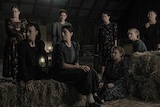  Women Talking – While Sarah Polley’s masterful adaption of Miriam Toews’ novel has a cast that includes good work from indie-friendly stars (Rooney Mara, Jessie Buckley, Claire Foy, Ben Whishaw), the glue holding it all together comes from Canadian actors such as Sheila McCarthy (whose tenderness is understated and poignant) and Michelle McLeod (often leavening darker moments with caustic humor.) Add revered veterans like Judith Ivey and in a smaller role, the inimitable Frances McDormand and you have an ensemble rivaling even Polley’s own family from her previous work Stories We Tell. — ck Women Talking – While Sarah Polley’s masterful adaption of Miriam Toews’ novel has a cast that includes good work from indie-friendly stars (Rooney Mara, Jessie Buckley, Claire Foy, Ben Whishaw), the glue holding it all together comes from Canadian actors such as Sheila McCarthy (whose tenderness is understated and poignant) and Michelle McLeod (often leavening darker moments with caustic humor.) Add revered veterans like Judith Ivey and in a smaller role, the inimitable Frances McDormand and you have an ensemble rivaling even Polley’s own family from her previous work Stories We Tell. — ck |
|
 Broker – Ensemble casts are such a delight, and director Hirokazu Kore-eda really knows how to use them well. For Broker he pulls out a couple of big names such as Song Kang-ho (Parasite, Snowpiercer) and Bae Doona (Cloud Atlas, The Host, Sense8) to raise the profile yet blends them seamlessly with large cast including a young boy and an infant! Add to that the combination of dramatic emotion, and silly comedy, and you need a cast the can really deliver. Which they do. — mrc Broker – Ensemble casts are such a delight, and director Hirokazu Kore-eda really knows how to use them well. For Broker he pulls out a couple of big names such as Song Kang-ho (Parasite, Snowpiercer) and Bae Doona (Cloud Atlas, The Host, Sense8) to raise the profile yet blends them seamlessly with large cast including a young boy and an infant! Add to that the combination of dramatic emotion, and silly comedy, and you need a cast the can really deliver. Which they do. — mrc |
|
 Hit the Road – A road-tripping family composes the ensemble in Iranian Panah Panahi’s directorial debut, Hit the Road, two late-middle aged parents, a son in his twenties, and his much younger brother. They show us, in all of their individual ways, that they are a family. They love each other, they are committed to each other, they care for each other. They also squabble and complain and throw tantrums. Despite the despair overshadowing their trip, this family is, in those ways, as any other family in any other country. It is a testament to the ensemble’s collective performance that we come to realize that common humanity, which helps us to appreciate and normalize the other and to imagine the force of their despair. — gp Hit the Road – A road-tripping family composes the ensemble in Iranian Panah Panahi’s directorial debut, Hit the Road, two late-middle aged parents, a son in his twenties, and his much younger brother. They show us, in all of their individual ways, that they are a family. They love each other, they are committed to each other, they care for each other. They also squabble and complain and throw tantrums. Despite the despair overshadowing their trip, this family is, in those ways, as any other family in any other country. It is a testament to the ensemble’s collective performance that we come to realize that common humanity, which helps us to appreciate and normalize the other and to imagine the force of their despair. — gp |
|
 Întregalde – The ensemble cast of Întregalde is primarily made up of four people, but the story these actors tell is spot on as a satire depicting aid workers who are confronted with the dilemma of how much help is too much. When the three aid workers find themselves in the deep forested wilderness of a thawing winter, with deep, muddy ruts and fallen trees making travel near-impossible, they stop to help an old man wandering through through the woods. At first he seems like he could be coherent, but that quickly vanishes. As their car gets trapped off road and night falls, tensions rise and the real drama begins. — mrc Întregalde – The ensemble cast of Întregalde is primarily made up of four people, but the story these actors tell is spot on as a satire depicting aid workers who are confronted with the dilemma of how much help is too much. When the three aid workers find themselves in the deep forested wilderness of a thawing winter, with deep, muddy ruts and fallen trees making travel near-impossible, they stop to help an old man wandering through through the woods. At first he seems like he could be coherent, but that quickly vanishes. As their car gets trapped off road and night falls, tensions rise and the real drama begins. — mrc |
|
 Leonor Will Never Die – Leonor Will Never Die – |
|
 Triangle of Sadness – From the preoccupied, elite to the hard-working, jaded workers on a cruise ship, the cast of Triangle of Sadness shine, portraying the worst features of each category when given the chance. A bumbling ship captain, a well-meaning but over-privileged model, and a domestic worker who finds herself in a position of power are just some of the fascinating characters these actors sink their teeth into. And during a particularly lengthy, and stomach-churning scene, these actors throw themselves into the craft with relish. — mrc Triangle of Sadness – From the preoccupied, elite to the hard-working, jaded workers on a cruise ship, the cast of Triangle of Sadness shine, portraying the worst features of each category when given the chance. A bumbling ship captain, a well-meaning but over-privileged model, and a domestic worker who finds herself in a position of power are just some of the fascinating characters these actors sink their teeth into. And during a particularly lengthy, and stomach-churning scene, these actors throw themselves into the craft with relish. — mrc |
|
Best Documentary
|
|
  Girl Talk – Girl Talk follows 5 teenage girls on their journey to be the best on their highly ranked debate team. Debate is not easy for starters; it takes practice, confidence and dedication. But even a greater challenge is that debate is male dominated and tough for these five to do it. In this, her last documentary, Lucia Small brings her observational and interviewing skills to create a most timely documentary. — vo Girl Talk – Girl Talk follows 5 teenage girls on their journey to be the best on their highly ranked debate team. Debate is not easy for starters; it takes practice, confidence and dedication. But even a greater challenge is that debate is male dominated and tough for these five to do it. In this, her last documentary, Lucia Small brings her observational and interviewing skills to create a most timely documentary. — vo |
|
 Cow – Andrea Anold takes an unusual subject and turns it into a an intimate and heartrending documentary. Shot from the cow’s viewpoint, the film begins with Muna, a cow, giving birth to a calf. From then on, the viewer endures the same suffering as the cow and there are many. The closeups on the piercing eyes of the cows makes one wonder if they know their fate. Whether they do or not, COW makes us see the reality – cows exist for meat and milk. You won’t look at a cow in the same way after watching this. — vo Cow – Andrea Anold takes an unusual subject and turns it into a an intimate and heartrending documentary. Shot from the cow’s viewpoint, the film begins with Muna, a cow, giving birth to a calf. From then on, the viewer endures the same suffering as the cow and there are many. The closeups on the piercing eyes of the cows makes one wonder if they know their fate. Whether they do or not, COW makes us see the reality – cows exist for meat and milk. You won’t look at a cow in the same way after watching this. — vo |
|
 Descendant – “How does one sleep with such memories beneath his pillow?” Zora Neal-Hurston asks of Cudjo Lewis, the last survivor of the last known illegal slave ship, the Clotilda. Powerful, moving, and disturbing evidence is uncovered in this film that documents the descendants of the people brought over on the vessel. This important film reveals more than the ship and its discovery at the bottom of the Mobile River, where it remained for years after its destruction. Descendant is a story of generations of injustice. Originally named Africa Town, the town (renamed Mobile) is home to the great grandchildren of those last stolen people, and viewers are awakened to the reality that these descendants are living under a continuing legacy of abuse and injustice. This documentary should awaken all to the true inheritance of African Americans, the descendants of slaves, who today continue to be denied basic human rights and who endure a consequential sociocultural struggle within this nation that wishes to erase the past and ignore the present reality. — bca Descendant – “How does one sleep with such memories beneath his pillow?” Zora Neal-Hurston asks of Cudjo Lewis, the last survivor of the last known illegal slave ship, the Clotilda. Powerful, moving, and disturbing evidence is uncovered in this film that documents the descendants of the people brought over on the vessel. This important film reveals more than the ship and its discovery at the bottom of the Mobile River, where it remained for years after its destruction. Descendant is a story of generations of injustice. Originally named Africa Town, the town (renamed Mobile) is home to the great grandchildren of those last stolen people, and viewers are awakened to the reality that these descendants are living under a continuing legacy of abuse and injustice. This documentary should awaken all to the true inheritance of African Americans, the descendants of slaves, who today continue to be denied basic human rights and who endure a consequential sociocultural struggle within this nation that wishes to erase the past and ignore the present reality. — bca |
|
 Fanny: The Right to Rock – A girl rock group in the ’60s? A Filipina rock group? A lesbian Filipina rock group? FANNY sees four members of this band (belatedly championed by David Bowie and others) come together again to record and spin tales about their lives. Initially spotted at an open mic in their native California, they got a multi-album contract from Warner. So why did they fall off the radar? The strong women of FANNY will win you over, as a misogynistic industry is pitted against the drive to play rock’n’roll. — djy Fanny: The Right to Rock – A girl rock group in the ’60s? A Filipina rock group? A lesbian Filipina rock group? FANNY sees four members of this band (belatedly championed by David Bowie and others) come together again to record and spin tales about their lives. Initially spotted at an open mic in their native California, they got a multi-album contract from Warner. So why did they fall off the radar? The strong women of FANNY will win you over, as a misogynistic industry is pitted against the drive to play rock’n’roll. — djy |
|
 The Kids in the Hall: Comedy Punks – While the Kids in the Hall are well-known for their sketch comedy series, less is known about the times before and after their heyday in the early 1990s. This film does an admirable job of telling that story, blending archival footage, interviews with the troupe members themselves, and a judicious use of some talking heads elements. Even as long-time fans, we learned a good deal about the troupe itself and their place in comedy history. Never leaning too heavily on one element, the film weaves humorous and bittersweet aspects of their history into a story that engages the casual and serious fan alike. tp/pe The Kids in the Hall: Comedy Punks – While the Kids in the Hall are well-known for their sketch comedy series, less is known about the times before and after their heyday in the early 1990s. This film does an admirable job of telling that story, blending archival footage, interviews with the troupe members themselves, and a judicious use of some talking heads elements. Even as long-time fans, we learned a good deal about the troupe itself and their place in comedy history. Never leaning too heavily on one element, the film weaves humorous and bittersweet aspects of their history into a story that engages the casual and serious fan alike. tp/pe |
|
 Sr. – Sr., directed by Chris Smith (Home Movie) is a unique meld of personal conversations between Robert Downey Sr. and his famous son, historical footage of their family, and Sr.’s filmmaking days, and a surprisingly powerful and moving chronicle of the final years, through the pandemic, of Sr.’s life. In addition, incorporated into this documentary, is the same story, as directed and edited by Sr. himself if he were to tell his story. The combination of all these varied themes and styles could have turned into a messy hodgepodge, but instead, it manages to elevate the story into something truly special. Sr. – Sr., directed by Chris Smith (Home Movie) is a unique meld of personal conversations between Robert Downey Sr. and his famous son, historical footage of their family, and Sr.’s filmmaking days, and a surprisingly powerful and moving chronicle of the final years, through the pandemic, of Sr.’s life. In addition, incorporated into this documentary, is the same story, as directed and edited by Sr. himself if he were to tell his story. The combination of all these varied themes and styles could have turned into a messy hodgepodge, but instead, it manages to elevate the story into something truly special. |
|

 Stéphane Collonge, The Eternal Daughter – In The Eternal Daughter, an artist and her elderly mother, both played by Tilda Swinton, confront long- buried secrets in their former family home that is now a hotel. As with the main characters, the location (in which virtually the entire film takes place) has a sort of faded beauty (as seen in the warm tones of the dining room), and an often (the pink toile de jouy of the mother’s bedroom or the pale green of the upstairs writing room), matching the foggy environment of the building itself, which in turn reflects the fog of memory of the main character(s). tp/pe
Stéphane Collonge, The Eternal Daughter – In The Eternal Daughter, an artist and her elderly mother, both played by Tilda Swinton, confront long- buried secrets in their former family home that is now a hotel. As with the main characters, the location (in which virtually the entire film takes place) has a sort of faded beauty (as seen in the warm tones of the dining room), and an often (the pink toile de jouy of the mother’s bedroom or the pale green of the upstairs writing room), matching the foggy environment of the building itself, which in turn reflects the fog of memory of the main character(s). tp/pe